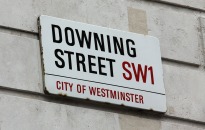
KEYSTONE INVESTMENT TRUST PLC - Annual Financial Report
PR Newswire
London, November 28
KEYSTONE INVESTMENT TRUST PLC
ANNUAL FINANCIAL REPORT ANNOUNCEMENT
FOR THE YEAR ENDED 30 SEPTEMBER 2016
FINANCIAL INFORMATION AND PERFORMANCE STATISTICS
Performance Statistics
| 2016 | 2015 | ||||||
| % CHANGE | % CHANGE | ||||||
| Total Return Statistics(1) | |||||||
| (capital growth with income reinvested) | |||||||
| Net asset value (NAV) per share: | |||||||
| – debt at par | +5.6 | +6.7 | |||||
| – debt at fair value | +5.2 | +6.4 | |||||
| Share price | +1.3 | +7.3 | |||||
| FTSE All-Share Index | +16.8 | –2.3 | |||||
| AT | AT | ||||||
| 30 SEPTEMBER | 30 SEPTEMBER | % CHANGE | |||||
| 2016 | 2015 | ||||||
| Capital Statistics | |||||||
| Net assets (£’000) | 264,947 | 259,625 | +2.0 | ||||
| NAV per share: | |||||||
| – debt at par | 1959.8p | 1920.5p | +2.0 | ||||
| – debt at fair value | 1894.9p | 1867.1p | +1.5 | ||||
| Share price(1) | 1735.5p | 1776.0p | –2.3 | ||||
| FTSE All-Share Index(1) | 3755.3 | 3335.9 | +12.6 | ||||
| Discount† of share price to net asset value per share: | |||||||
| – debt at par | 11.4% | 7.5% | |||||
| – debt at fair value | 8.4% | 4.9% | |||||
| Gearing from borrowings† | – gross | 12.1% | 12.3% | ||||
| – net | 6.2% | 4.4% | |||||
| FOR THE YEAR TO 30 SEPTEMBER | |||||||
| 2016 | 2015 | ||||||
| Revenue Statistics | |||||||
| Net revenue available for ordinary shareholders (£’000) | 8,386 | 8,659 | |||||
| Revenue return per ordinary share | 62.0p | 64.1p | –3.3 | ||||
| Dividends per ordinary share – first interim | 18.0p | 18.0p | |||||
| – second interim | 35.0p | 33.0p | |||||
| 53.0p | 51.0p | +3.9 | |||||
| – special | 5.3p | 12.3p | |||||
| – total | 58.3p | 63.3p | |||||
| Ongoing charges†: | |||||||
| Excluding performance fee | 0.69% | 0.71% | |||||
| Performance fee | 0.03% | 1.00% | |||||
† Defined in the Glossary of Terms on page 64.
(1) Source: Thomson Reuters Datastream.
CHAIRMAN’S STATEMENT
Performance
The total return to shareholders over the year to 30 September 2016 was 1.3%, based on the share price with dividends reinvested. Whilst this was a marginally positive return it was some way behind our benchmark, the FTSE All-Share Index, which posted a total return of 16.8%. The total return on the underlying net asset value (NAV) per share was 5.6% with debt at par value and 5.2% with debt at market (fair) value, thus part of the share price underperformance coming from a widening of the discount at which the shares trade relative to the NAV.
The three year share price performance also now lags our benchmark. However, the three year net asset performance still exceeds it, with a NAV total return (debt at fair value) of 26.0% compared with 21.1% for the benchmark, so a performance related fee is again payable, although it is very much reduced from last year at £65,000 (2015: £2,544,000).
The Company’s longer term performance continues to be strong with five and ten year share price total returns of 82.6% and 131.2% respectively, compared with total returns of 68.9% and 75.5% for the FTSE All-Share Index. The NAV per share (with debt at fair value) total returns over the same periods were 88.6% and 127.6% (all figures sourced from Thomson Reuters Datastream).
The Manager’s Report section of the following Strategic Report provides background on the year’s investment performance and a detailed explanation for this year’s disappointing return. In summary, the continued lack of mining stocks in our portfolio, a strategy which had served the Company well for so many years, and low exposure to oil negatively impacted the period under review as share prices for such stocks rebounded sharply.
Discount widening was a sector wide phenomenon. The weighted average discount of the investment companies in the UK All Companies sector was 9.2% at 30 September 2016 compared with 4.9% at 30 September 2015 (source: J.P. Morgan Cazenove). The average discount at which the Company’s ordinary shares traded relative to their underlying NAV (with debt at fair value) over the past year was 7.7%, compared with an average of 3.8% last year. The share price stood at a discount of 8.4% relative to the NAV (debt at fair value) at the year end.
Revenue and Dividends
Income in the year, excluding special dividends, increased by almost 8% to £9,062,000 from £8,400,000 last year. However the amount of special dividends fell and consequently the total income for the year of £9,783,000 was less than last year’s £10,071,000. The revenue return after tax fell correspondingly to 62.0p per ordinary share, compared with 64.1p for the year to 30 September 2015.
The Board has declared a second interim dividend, in lieu of a final, of 35p per share (2015: 33p), giving a total ordinary dividend for the year of 53p per share (2015: 51p). The dividend will be paid on 23 December 2016 to shareholders on the register on 2 December 2016.
The Company has continued to benefit from special dividends received from investee companies, albeit at a lower scale than last year. These dividends totalled £721,000, the equivalent of 5.33p this year (2015: £1,671,000; 12.36p) and the Board has decided again to pass the greater part of this on to shareholders as a special dividend of 5.3p (2015: 12.3p). The special dividend will be paid at the same time as the second interim dividend. As indicated in my statement last year the reduction in special dividends received this year was not a surprise and we anticipate the level of special dividends is likely to continue to decline.
Gearing
The Board takes responsibility for the Company’s gearing strategy and sets parameters within which the portfolio manager operates. The Company’s borrowings, in the form of long-term debentures, amount to £32 million. The net gearing of the Company is determined by the extent to which these borrowings are invested. The Board has remained reasonably cautious through the past year, but relaxed the threshold in January 2016 after the market setback. Since then the parameters limiting the Manager have been that no net purchases be made which would take equity exposure above 107.5% of net assets (previously 105%), and that sales be made if, as a result of market movements, equity exposure goes higher than 115% of net assets. It is up to the portfolio manager to decide on exposure subject to these limits. When held, corporate bonds are not treated as equity exposure for the purposes of the gearing limits.
Foreign Exchange
The Company has some non-sterling denominated investments and is therefore subject to foreign exchange risk. The Board monitors foreign currency exposure and takes a view, from time to time, on whether foreign currency exposure should be hedged. For the present, the Board has prescribed that all currency exposure should be hedged other than US dollar and Swiss franc. At the year end 5.7% of the portfolio was exposed to US dollars and 5.1% to Swiss francs, neither of which were hedged.
Outlook
The UK stock market as a whole delivered impressive returns over the last year, notwithstanding the uncertainty and sterling weakness fostered by the referendum in June and its aftermath. These elements look likely to continue for some time and, combined with the other background concerns of downward pressure on corporate profitability and subdued global growth, will challenge the UK equity market’s long term growth potential.
However, the Board remains confident that Mark Barnett and his team will continue to find opportunities for investment that will, combined with their proven long term investment approach, generate worthwhile returns over time and enable the Company to fulfil its investment objective to provide shareholders with long-term growth of capital.
Annual General Meeting
The Notice of the Annual General Meeting of the Company, which is to be held on 24 January 2017, is on pages 58 to 61 and a summary of the resolutions is set out in the Directors’ Report on pages 56 and 57.
Beatrice Hollond
Chairman
29 November 2016
STRATEGIC REPORT
FOR THE YEAR ENDED 30 SEPTEMBER 2016
BUSINESS REVIEW
Keystone Investment Trust plc is an investment company holding investments with a market value in excess of £280 million and its investment objective is set out below. The strategy the Board follows to achieve that objective is to set investment policy and risk guidelines, together with investment limits, and to monitor how they are applied. These are also set out below.
The business model adopted by the Company to achieve its objective has been to contract the services of Invesco Fund Managers Limited (the ‘Manager’) to manage the portfolio in accordance with the Board’s strategy and under its oversight. The Manager also provides company secretarial, marketing and general administration services. The portfolio manager responsible for the day-to-day management of the portfolio is Mark Barnett.
All administrative support is provided by third parties. In addition to the management and administrative functions of the Manager, the Company has contractual arrangements with Capita Asset Services as registrar and with BNY Mellon Trust & Depositary (UK) Limited as depositary. The depositary has delegated safekeeping of the Company’s investments to The Bank of New York Mellon (London Branch) who acts as custodian under this authority.
Investment Objective and Policy
Investment Objective
The Company’s objective is to provide shareholders with long-term growth of capital, mainly from UK investments.
Investment Policy and Risk
The portfolio is invested by the Manager so as to maximise exposure to the most attractive sectors and stocks within the UK stock market and, within the limits set out below, internationally. The Manager does not set out to manage the risk characteristics of the portfolio relative to the benchmark index and the investment process will result in potentially very significant over or underweight positions in individual sectors versus the benchmark.
The Manager controls stock-specific and sector risk by ensuring that the portfolio is always appropriately diversified. In depth, continual analysis of the fundamentals of investee companies allows the portfolio manager to assess the financial risks associated with any particular stock. The portfolio is typically made up of 50 to 80 stocks. If a stock is not considered to be a good investment, then the Company will not own it, irrespective of its weight in the index.
Investment limits
The Board has prescribed the following limits on the investment policy, all of which are at time of investment unless otherwise stated:
– no single equity investment in a UK listed company may exceed 12.5% of gross assets;
– the Company will not invest more than 15% of its assets in other listed investment companies;
– the Company will not invest more than £12 million in bonds, with a maximum of £1.5 million in any issue;
– the Company will normally not invest more than 5% of gross assets in unquoted investments;
– the Company will not normally invest more than 15% of its equity investments in companies that are not UK listed and incorporated; and
– borrowing may be used by the Company to create gearing within limits determined by the Board.
Gearing Policy
The Board carefully considers the Company’s policy in respect of the level of equity exposure. The Board takes responsibility for the Company’s gearing strategy and sets guidelines to control it, which it may change from time to time. Since January 2016 these guidelines have required that the Manager must make no net purchases if equity exposure was more than 107.5% of net assets (previously 105%), and must make sales if, as a result of market movements, equity exposure was to exceed 115% of net assets. When held, corporate bonds are not treated as equity exposure for the purposes of the gearing limits.
Performance
Delivery of shareholder value is achieved through outperformance of the relevant benchmark.
The Board reviews performance by reference to a number of Key Performance Indicators that include the following:
• net asset value (NAV) and share price total return compared with benchmark and peer group performance;
• share price premium/discount relative to the net asset value;
• dividends; and
• ongoing charges.
The Company’s NAV (debt at fair value) and share price total returns for the year to 30 September 2016 were 5.2% and 1.3%, both of which were substantially less than the total return of the Company’s benchmark, the FTSE All-Share Index, of 16.8%. The Manager’s Report on pages 12 and 13 provides commentary on the reasons for the performance. The year’s results do not reflect the longer term successful implementation of the business strategy by the Manager – over three years, the Company’s NAV (debt at fair value) and share price returns were 26.0% and 16.7% respectively compared to the benchmark return of 21.1%. Over five years, the returns were 88.6% and 82.6% compared to the benchmark of 68.9%. The Manager is entitled to a performance-related fee based on the last three years’ NAV performance and a fee of £65,000 consequently accrues. A table of the returns for the last ten years, together with a graph, can be found on page 3.
Peer group performance is monitored by comparing the Company with the 15 investment companies making up the UK All Companies sector of the approximately 300 investment companies in the UK. As at 30 September 2016, in NAV total return terms, the Company was ranked 8th in its sector over one year, 6th over three years and 7th over 5 years (source: JPMorgan Cazenove).
The Company’s shares traded at a discount relative to NAV (with debt at fair value) through the year, as shown in the following graph. The discount at the year end was 8.4%.
Although there is no specific target discount range a small discount or a premium would imply that there was strong demand for the shares. In order to ensure that the demand for and supply of the Company’s shares are roughly in balance, the Board asks shareholders to approve resolutions every year which allow for the repurchase of shares (for cancellation or to be held as treasury shares) and also their issuance. This may assist in the management of the discount. The Company has not issued any ordinary shares in the year and no shares were repurchased.
Dividends form a key component of the total return to shareholders. The income from the portfolio and potential level of dividend payable is reviewed at every board meeting. A first interim dividend of 18p (2015:18p) per share was paid on 10 June 2016 and a second interim dividend of 35p (2015: 33p) per share has been declared, which is payable on 23 December 2016 to shareholders on the register at 2 December 2016. These give a total ordinary dividend for the year of 53p compared with 51p for the previous year. The Board has also declared a special dividend of 5.3p (2015: 12.3p) to be paid at the same time as the second interim dividend. The dividend history of the Company over the last ten years is shown in the table on page 3.
Ongoing charges is the industry measure of costs as a percentage of net asset value. The expenses of the Company are reviewed at every board meeting, with the aim of managing costs incurred and their impact on performance. The ongoing charges figure for the past year, which excludes the performance fee, was 0.69%, compared with 0.71% for the year to 30 September 2015. The ten year record of ongoing charges is shown on page 3.
Financial Position
At 30 September 2016, the Company’s net assets were valued at £265 million (2015: £260 million). These comprised a portfolio of mainly equity investments and net current assets. The Company has an uncommitted short-term overdraft facility with the custodian for settlement and liquidity purposes.
At 30 September 2015 and 30 September 2016, the Company’s ordinary shares were geared by borrowings in the form of two issues of long-term debentures, totalling £32 million nominal. Their weighted average interest rate was 6.77% for both years. The Company also had £0.25 million of 5% cumulative preference shares in issue.
Outlook and Future Trends
The main trends and factors likely to affect the future development, performance and position of the Company’s business can be found in the following Manager’s Report section of this Strategic Report. Further details as to the risks affecting the Company are set out below under ‘Principal Risks and Uncertainties’.
Principal Risks and Uncertainties
The audit committee regularly undertakes a robust assessment of the risks the Company faces, on behalf of the Board (see Audit Committee Report on pages 19 to 21).
The following are considered to be the most significant risks to the Company and to shareholders in relation to their investment in the Company. Further details of risks and risk management policies as they relate to the financial assets and liabilities of the Company are detailed in note 16 to the financial statements.
Investment Objective
There is no guarantee that the Company’s strategy and business model will be successful in achieving its investment objective.
The Board monitors the performance of the Company and has established guidelines to ensure that the investment policy that has been approved is pursued by the Manager.
Market Risk
The majority of the Company’s investments are traded on the London Stock Exchange. The principal risk for investors in the Company is of a significant fall in stock markets and/or a prolonged period of decline in the markets relative to other forms of investment. The value of investments held within the portfolio is influenced by many factors including the general health of the economy in the UK, interest rates, inflation, government policies, industry conditions, political events, tax laws, environmental laws and investor sentiment. The portfolio manager has summarised in the Manager’s Report section of this Strategic Report particular factors affecting the performance of markets in the year and his view of those most pertinent to the outlook for the portfolio. Such factors are out of the control of the Board and the Manager and may give rise to high levels of volatility in the prices of investments held by the Company, although the use or elimination of gearing may modify the impact on shareholder return.
Investment Risk
An inherent risk of investment is that the stocks selected for the portfolio do not perform well.
The investment process employed by the Manager combines top down assessment of economic and market conditions with stock selection. Fundamental analysis forms the basis of the Company’s stock selection process, with an emphasis on sound balance sheets, good cash flows, the ability to pay and sustain dividends, good asset bases and market conditions. The process is complemented by constant assessment of market valuations. It is important to have a sense of a company’s realistic valuation which, to some extent, will be independent of the price at which it trades in the market. Overall, the investment process is aiming to achieve absolute returns through a genuinely active fund management approach. This can therefore result in a portfolio which looks substantially different from the benchmark index.
Risk management is an integral part of the investment management process. The Manager effectively controls risk by ensuring that the Company’s portfolio is always appropriately diversified. Continual analysis of all holdings gives the Manager a full understanding of financial risks associated with them.
The portfolio of investments held at 30 September 2016 is set out on pages 14 and 15.
Past performance of the Company is not necessarily indicative of future performance.
Shares
Shareholders are exposed to certain risks in addition to risks applying to the Company itself.
The ordinary shares of the Company may trade at a premium or discount to its NAV. The Board monitors the price of the Company’s shares in relation to their NAV and the premium/discount at which they trade.
The value of an investment in the Company and the income derived from that investment may go down as well as up and an investor may not get back the amount invested.
While it is the intention of the Directors to pay dividends to ordinary shareholders twice a year, the ability to do so will depend upon the level of income received from securities and the timing of receipt of such income by the Company. Accordingly, the amount of the dividends paid to ordinary shareholders may fluctuate. Any change in the tax or accounting treatment of dividends or other investment income received by the Company may also affect the level of dividend paid.
The Directors seek powers to issue and buy back the Company’s shares each year, which can be used to help manage the level of discount. The Board also monitors the level of revenue available for distribution at each Board meeting.
Gearing
Gearing levels may change from time to time in accordance with the Manager’s and the Board’s assessment of risk and reward. Whilst the use of borrowings by the Company should enhance total return where the return on the Company’s underlying securities is rising and exceeds the cost of borrowing, it will have the opposite effect where the underlying return is falling. As at 30 September 2016, net gearing from borrowings stood at 6.2%. The Board and the Manager regularly review gearing and will continue to monitor the level closely over the year ahead.
Reliance on the Manager and Other Service Providers
The Company has no employees and the Directors have all been appointed on a non-executive basis. The Company is reliant upon the performance of third party service providers for it to function. In particular, the Manager performs services that are integral to the operation of the Company. Failure by any service provider to carry out its obligations to the Company in accordance with the terms of its appointment or compromise of their systems could have a materially detrimental impact on the operation of the Company and could affect the ability of the Company to successfully pursue its investment policy.
The Company has limited direct exposure to cyber risk. However, the Company’s operations or reputation could be affected if any of its service providers suffered a major cyber security breach. The Board monitors the preparedness of its service providers in this regard and is satisfied that the risk is given due priority.
The Manager may be exposed to reputational risks. In particular, the Manager may be exposed to the risk that litigation, misconduct, operational failures, negative publicity and press speculation, whether or not it is valid, will harm its reputation. Any damage to the reputation of the Manager could result in potential counterparties and third parties being unwilling to deal with the Manager and by extension the Company. This could have an adverse impact on the ability of the Company to pursue its investment policy successfully. The Company’s main service providers are listed on page 63.
The Board monitors the services provided to the Company, informally at every Board meeting and formally at least annually.
Regulatory
The Company is subject to various laws and regulations by virtue of its status as a public limited company, as an investment trust and as an alternative investment fund. A loss of investment trust status could lead to the Company being subject to capital gains tax on the profits arising from the sale of its investments. A serious breach of other regulatory rules might lead to suspension from the Stock Exchange. Other control failures, either by the Manager or another of the Company’s service providers, might result in operational or reputational problems, erroneous disclosures or loss of assets through fraud, as well as breaches of regulations.
The Manager reviews the level of compliance with tax and other regulatory financial requirements on a daily basis. All transactions, income and expenditure are reported to the Board. The Board regularly considers all risks, the measures in place to control them and the possibility of any other risks that could arise. The Board ensures that satisfactory assurances are received from service providers. The Manager’s Compliance Officer produces regular reports for review by the Company’s Audit Committee.
Mehr Nachrichten zur KEYSTONE INV.TRUST LS-,50 Aktie kostenlos abonnieren
(Mit der Bestellung akzeptierst du die Datenschutzhinweise)

Hinweis: ARIVA.DE veröffentlicht in dieser Rubrik Analysen, Kolumnen und Nachrichten aus verschiedenen Quellen. Die ARIVA.DE AG ist nicht verantwortlich für Inhalte, die erkennbar von Dritten in den „News“-Bereich dieser Webseite eingestellt worden sind, und macht sich diese nicht zu Eigen. Diese Inhalte sind insbesondere durch eine entsprechende „von“-Kennzeichnung unterhalb der Artikelüberschrift und/oder durch den Link „Um den vollständigen Artikel zu lesen, klicken Sie bitte hier.“ erkennbar; verantwortlich für diese Inhalte ist allein der genannte Dritte.





